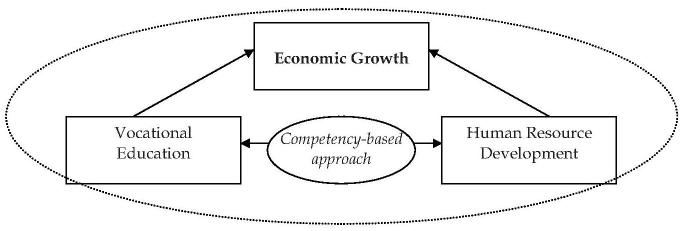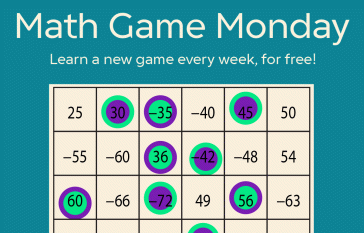
A high school in the United States is an educational institution where students complete their secondary education. Its main function is to provide high-quality education for all students. When choosing a high school, there are many factors to consider. These include Common Core State Standards and Courses, Number of courses per Day, Report cards, and Number of courses offered.
Courses available
There are many courses offered at high schools in the United States. They vary according to state requirements. Many state requirements require that high school students take at least one full year of foreign language courses. High schools offer AP Courses for a variety languages. While these courses aren't required for graduation, they can help students prepare for college and career-related goals.
Students in high schools throughout the United States can choose from AP Psychology, a course that introduces advanced concepts in the study of human behavior. This course covers all aspects of writing and focuses on the craft of storytelling as well as the subject matter.
Common Core State Standards
The Common Core State Standards are designed to assist students in college success. These standards were developed over 18 months. They began with a report by three large groups in late 2008, and then went through several revisions. The document was then made available for public and expert comments, and finally finalized in June 2010. The standards were designed to fix two major problems: American college students aren't prepared for business or college, and they lack the skills necessary to succeed in the workplace.

Common Core is a set standard in mathematics and English language art/literacy, which are intended to help all students prepare for college and their future careers. The standards define grade-specific learning outcomes for students and give parents a clear understanding of expectations. These standards are designed to assist parents and teachers in working together to ensure that their children meet the standards.
Number of courses per course
High schools offer many courses to their students. Some schools offer more than one course per day. These courses can be used to satisfy graduation requirements, and you can contact your school's guidance department to learn more about the course requirements. High schools often offer courses in foreign languages. These courses allow students learn the basics in more than one language. Some schools also offer advanced classes. There are many languages available, including Spanish, Russian and Latin.
High school students typically spend between 7:30 a.m. - 3:00pm on average. Students often take part in extracurricular activities. These activities are usually held during the school day but can also be scheduled on weekends. High school class schedules can also vary. Some schools offer the same classes every single day, while others offer different classes at various times.
Report cards
Report cards are a collection of information that students receive about their school performance. Report cards can be issued by many states or organizations. They can be used to help determine a student’s academic progress. In many cases, grades are used to sort students into different programs and help them get into college. They can also be used as an incentive to improve performance at school.
The federal and state governments require public schools to create and distribute a report card every year. These reports provide valuable information about public schools and can be used to track student progress. The report cards can be requested electronically or in hard copy at any school.

International students' options
Many options are available for international students wanting to study in the United States. Fulbright scholarships can be one of these options. These scholarships give you the chance to study in the United States while also living with an American host family. Furthermore, international students may take English language lessons in the evenings after school.
There are many different types of high schools in the United States. You need to take into account the school's academic as well as social focus before you make a decision on which one is the best. For example, if you're interested in studying engineering, you should consider attending a school that specializes in that area. The school's language requirements will also be important.
FAQ
How can I get scholarships?
Scholarships are grants that can be used to pay college costs. There are many types available in scholarships. These are:
-
Federal Grants
-
State Grants
-
Student Loans
-
Programs for Work Study
-
Financial Aid
Federal grants are directly issued by the U.S. government. Most federal grants require applicants to meet certain requirements. You will need to prove financial need.
Individual states offer state grants. These funds are offered by individual states based on financial need. Others offer money for specific purposes.
Banks and other lending agencies can provide student loans. Students are often able to borrow money for expenses such as tuition or living expenses.
Work-study programs are designed to encourage employers to hire qualified students. Employers are required by law to pay minimum wage.
Financial aid helps low-income families afford college by covering most or all tuition costs.
Who can homeschool?
Anyone can homeschool. No special qualifications are required.
It is possible for parents to teach their children after they have finished high school. Many parents choose to teach their children as they go to college.
Parents with less formal education can learn how to teach their children.
Parents can become certified teachers after completing certain requirements. These requirements are different for each state.
Some states require that all homeschooled students pass a test before they graduate. Others do not.
Parents who wish to homeschool must register their family with the local school district.
The process involves filling up paperwork and submitting the completed form to your school board.
After registering, parents are allowed to enroll their children in public or private schools.
A few states allow parents who are not registered with the government to homeschool their children.
If you live in one these states, your responsibility is to ensure that your children are compliant with the state's compulsory attendance laws.
Is it hard to be a teacher?
Being a teacher is a huge commitment. It will require you to dedicate a lot of time to your studies.
You should expect to work around 40 hours per week while pursuing your degree.
Additionally, you need to find a job which suits your schedule. Many students report difficulty finding part-time jobs that work around their school schedules.
You will likely teach classes once you have been hired as a full time teacher. You may even need to travel to different schools throughout the week.
What is a "Trade School"?
Trade schools can be an alternative for those who have not had success in traditional higher education to obtain a degree. They offer career-oriented programs that help students get prepared for specific careers. These programs allow students to complete two years' worth of coursework in one semester. Then they can enter into a paid apprenticeship program that teaches them a specific skill set and provides on-the job training. Trade schools can include technical schools, community colleges and junior colleges as well as universities. Some trade schools also offer associate programs.
Should I be a specialist or branch out in one area?
Many students opt to specialize in one area (e.g. English History, Math) and not branch into many other subjects. But, you don't always have to specialize. You could, for example, choose to specialize in surgery or internal medicine if you are considering becoming a physician. You could also opt to become a general physician, specializing in either pediatrics, family practice or psychiatry. If you're considering a business career, you could concentrate on marketing, management, finance, human resources, operations research, or sales. The choice is yours.
What is the purpose and function of education?
Education should equip students with the skills they need to be successful in work. Education is more than a academic pursuit. It's a social activity that allows children to learn from one another and gains confidence through participation in arts, music, and sports. It is all about teaching students how to think critically, and how to create so they can be independent and self-reliant. What does it mean for a school to be able to meet high educational standards?
Education standards that ensure all students reach their full potential are good. They establish clear goals for teachers to work towards with their students. Schools can adapt to changing educational needs if they have good educational standards. In addition, they must be fair and equitable: every child has the same chance of success regardless of his/her background.
What is homeschooling?
Homeschooling refers to a way in which children are taught at home by their parents. It can also be called homeschooling, self-education and private education.
If you want your children to learn at home, then homeschooling can be a great option. This allows them to get a quality education in the comfort of their own homes.
They educate their children right from birth through high school. They choose which subjects to study and how long each subject should last. Every subject is taught by the student in his/her own time.
When to start teaching children is up to the parents. Many schools recommend that children attend classes from age four until twelve years old. However, some families prefer to wait until their children are in kindergarten before they start teaching.
Parents can use any number or resources to assist them in learning the curriculum. The lessons can be learned from videos, books and magazines as well as websites.
Many families find homeschooling works well for their busy schedules. Children can be spent more time at home than in traditional public schools.
Statistics
- Think of the rhetorical power of nineteenth-century abolitionist Harriet Beecher Stowe, Martin Luther King, Jr., or Occupy Wall Street activists with their rallying cry of “we are the 99 percent.” (bostonreview.net)
- In most developed countries, a high proportion of the population (up to 50%) now enters higher education at some time in their lives. (en.wikipedia.org)
- And, within ten years of graduation, 44.1 percent of 1993 humanities graduates had written to public officials, compared to 30.1 percent of STEM majors. (bostonreview.net)
- These institutions can vary according to different contexts.[83] (en.wikipedia.org)
- Among STEM majors, that number is 83.5 percent. (bostonreview.net)
External Links
How To
Where can you find a teacher job?
There are many teaching jobs available in public elementary and private schools.
A bachelor's degree is required to become a teacher.
-
A university or college that is four-years in length
-
Associate's degree program
-
Two-year programs at community colleges
-
The combination of these types of programs
Candidates must fulfill state requirements to be eligible for teaching certification. These include passing standardized tests and completing a probationary period of work experience.
Many states require applicants to pass the Praxis II test. This test assesses the candidate's reading, writing, mathematics, as well as language arts knowledge.
A lot of states also require applicants to have a specialized licence before they can be certified to teach.
These licenses are issued by the states' boards of education.
Some states grant licenses with no additional testing. To determine if your state has granted licenses without additional testing, you should contact the board in your state.
Some states don't grant licenses to applicants who haven't completed a masters degree program.
Others allow students to apply directly for licensure to the state board.
Licenses come in a variety of prices, lengths, and required coursework.
One example is that some states only require high school diplomas, while others require bachelor's degrees.
Some states require specific training, such as in literacy and child development.
Some states require candidates to have a master's degree in order to become licensed.
Many states will ask applicants for their prior employment information when they apply to become certified teachers.
If you were a member of another profession, it might be a good idea to mention this on your application.
However, most states will accept your prior work experience no matter what type of job you held.
You might want to list your job title, previous position, and years of experience.
Potential employers often find this information useful.
It shows them that your skills and experiences are relevant.
You might have acquired valuable work experience or learned new skills while working.
Future employers can view your resume.